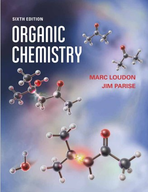In the late 1970s, a graduate student at a major West Coast university began
Chapter 17, Problem 17.57(choose chapter or problem)
In the late 1970s, a graduate student at a major West Coast university began synthesizing new classes of drugs and testing them on himself. After being expelled from the university, he began making his living by illegally synthesizing and selling to heroin addicts compound B, a synthetic analog of meperidine (Demerol). (See Fig. P17.57, p. 878.) After shortening his synthetic procedure and self-injecting his product, he developed severe symptoms of Parkinsons disease, as did several of his young clients; one person died. Chemists found that his compound B contained two by-products, alcohol C and another compound MPTP (C12H15N), which, when independently prepared and injected into animals, caused the same symptoms. (Ironically, this has been one of the most significant advances in Parkinsonism research.) Given the illicit chemistry outlined in Fig. P17.57, provide the structure of compound A, suggest a structure for MPTP, and show how all products are formed.
Unfortunately, we don't have that question answered yet. But you can get it answered in just 5 hours by Logging in or Becoming a subscriber.
Becoming a subscriber
Or look for another answer
